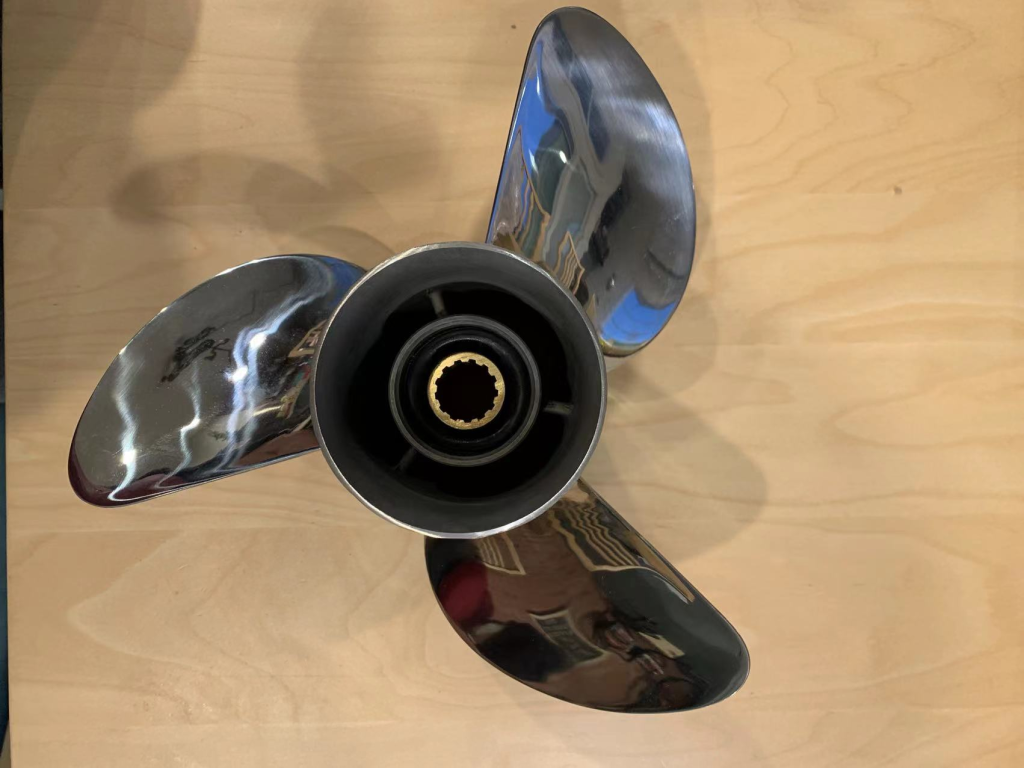Smooth sailing: The importance of choosing the best boat propeller hub kit for your boat.
- Disassemble the method of replacing the propeller hub kit, and test after installation.
- When does the propeller hub kit need to be replaced with a new one.
- Common signs of propeller bushing failure.
- Other problems that may result from wear of the propeller shaft sleeve.
- The increase of the clearance between the shaft sleeve and the shaft will affect the smoothness of the propeller and the navigation performance of the ship.

To remove and install a boat propeller hub kit, follow these steps:
1.Gather the necessary tools and materials: You will need a socket wrench, propeller wrench, propeller hub kit (including the necessary components such as a new hub, thrust washer, and nut), a hammer or mallet, and grease.
2.Remove the propeller: Use a socket wrench to loosen and remove the propeller nut. Some propellers may have a cotter pin or a keeper to secure the nut, so remove those first. Then, use a propeller wrench to hold the propeller in place while loosening the nut. Once the nut is removed, carefully slide the propeller off the propeller shaft.
3.Remove the old hub: Locate the hub assembly at the center of the propeller. It may be secured with a few screws or bolts. Remove these fasteners and then use a hammer or mallet to tap the hub gently, working your way around its circumference. This will help loosen the hub from the propeller shaft. Once loose, slide the old hub off the shaft.
4.Clean the propeller shaft: Use a clean cloth to wipe off any dirt, debris, or old grease from the propeller shaft. This will ensure a smooth installation of the new hub.
5.Install the new hub: Apply a thin layer of grease to the propeller shaft. Then, slide the new hub onto the shaft, making sure it is properly aligned with the keyway on the shaft. Gently tap the hub with a hammer or mallet to ensure it is fully seated on the shaft.
6.Secure the hub: Reinstall the screws or bolts that secure the hub to the propeller. Make sure they are tightened securely, but not overly tightened.
7.Install the propeller: Slide the propeller back onto the propeller shaft, aligning it with the keyway on the hub. Make sure it is fully seated and then thread the propeller nut back onto the shaft. Use a propeller wrench to hold the propeller in place while tightening the nut. If necessary, reinstall any cotter pins or keepers to secure the nut.
8.Test the propeller: Once the propeller is securely installed, give it a test spin by rotating it by hand. It should rotate smoothly without any wobbling or binding.
9.Check for leaks: If your boat has a water-lubricated propeller shaft, check for any water leakage around the hub area. If you notice any leaks, it may indicate a problem with the hub installation, and you should consult a professional for further assistance.
- Remember to always refer to the manufacturer’s instructions and guidelines specific to your boat and propeller hub kit.

To determine whether the propeller shaft sleeve needs to be replaced, you can consider the following factors:
1.Check for visible damage: Inspect the exterior of the shaft sleeve for any visible cracks, deformations, or signs of wear. If there are any noticeable damages, it may indicate the need for replacement.
2.Check for excessive play: The shaft sleeve connects the propeller to the shaft. If there is noticeable looseness or play between the shaft sleeve and the shaft, it may indicate the need for replacement. You can gently shake the propeller to check for any significant movement or looseness.
3.Check for smooth rotation of the propeller: If the propeller produces unusual noise, vibrations, or does not rotate smoothly, it could be a sign of a problem with the shaft sleeve. Excessive wear on the shaft sleeve can cause imbalance or obstruction in the propeller rotation, indicating the need for replacement.
4.Observe the wake pattern: While underway, observe the wake pattern at the stern of the vessel. If there is an abnormal or unbalanced wake pattern, it may indicate an issue with the propeller caused by worn-out shaft sleeve.
5.Consider the service life: Based on the vessel’s usage and maintenance records, if the shaft sleeve has been in service for a long time or has undergone significant sailing tasks, it may be necessary to replace it to ensure safety and performance.
6.If you are unsure about determining whether the propeller shaft sleeve needs replacement, it is recommended to consult a professional marine technician or the vessel manufacturer for accurate advice and assessment.
Here are some common signs of propeller bushing failure:
1.Visible wear or damage: Check the outside of the propeller shaft sleeve for obvious wear, cracks or damage marks. If there is significant damage, it may need to be replaced.
2.Abnormal noise or vibration: If the propeller shaft sleeve produces abnormal noise or vibration, it may be a sign of failure. This may be due to wear or damage to the propeller shaft sleeve.
3.Oil leakage or leakage: If the propeller shaft sleeve has oil leakage or leakage, it may need to be replaced. This may be due to seal failure or damage to the bushing itself.
Abnormal sailing performance: If the ship has abnormal performance while sailing, such as reduced speed, weakening acceleration, or unstable sailing direction, it may be a sign of propeller shaft sleeve failure.
4.Loosening between shaft sleeve and shaft: Check whether there is obvious loosening or clearance between propeller shaft sleeve and shaft. If there is significant loosening between the sleeve and the shaft, it may need to be replaced.
5.If you notice any of these signs, it is recommended to promptly contact a professional ship repair technician or ship manufacturer for further inspection and evaluation.

Wear of the propeller bushing can cause the following other problems:
1.Loosening between sleeve and shaft: Wear may cause the gap between sleeve and shaft to increase, resulting in loosening. This will affect the smoothness of the propeller and the sailing performance of the ship.
2.Leaks or drips: Wear may cause the sealing performance of the bushing to decline, resulting in leakage or drips of oil or lubricants. This leads to waste of oil, environmental pollution, and possible damage to other ship components.
3.Propeller vibration: Wear causes unevenness or asymmetry of the bushing, which can lead to unbalanced vibration of the propeller. This increases the noise and vibration of the vessel, affects the boat experience, and can damage other ship components.
4.Decreased propeller efficiency: Wear can cause an increase in the surface roughness of the propeller, which reduces the hydrodynamic performance of the propeller. This results in a decrease in the propulsion efficiency of the vessel, a slower sailing speed, and an increase in fuel consumption.
5.Bushing damage: Severe wear may eventually lead to damage to the bushing, such as cracks or breaks. This will require urgent repair or replacement of the bushing to avoid further damage and safety risks.
6.Therefore, it is very important to check and maintain the wear of the propeller shaft sleeve in time to ensure the safety and normal operation of the ship.

Conclusion about How to find the problems of Marine propeller hub kit, and learn to deal with simple methods.
In conclusion, finding and dealing with problems in a marine propeller hub kit can be a straightforward process if you follow some simple methods. Here are the key takeaways:
Regular inspection: Conduct regular inspections of the propeller hub kit to identify any visible signs of damage or wear. Look for cracks, corrosion, loose components, or any abnormalities.
Listen for unusual noises: Pay attention to any strange noises coming from the propeller hub when the boat is in operation. Unusual vibrations or grinding sounds may indicate a problem that needs to be addressed.
Check alignment: Ensure that the propeller hub is properly aligned with the shaft. Misalignment can cause excessive wear and damage to the hub. Use alignment tools or seek professional assistance if needed.
By following these simple methods, you can effectively find and deal with problems in a marine propeller hub kit, ensuring optimal performance and safety while out on the water.


